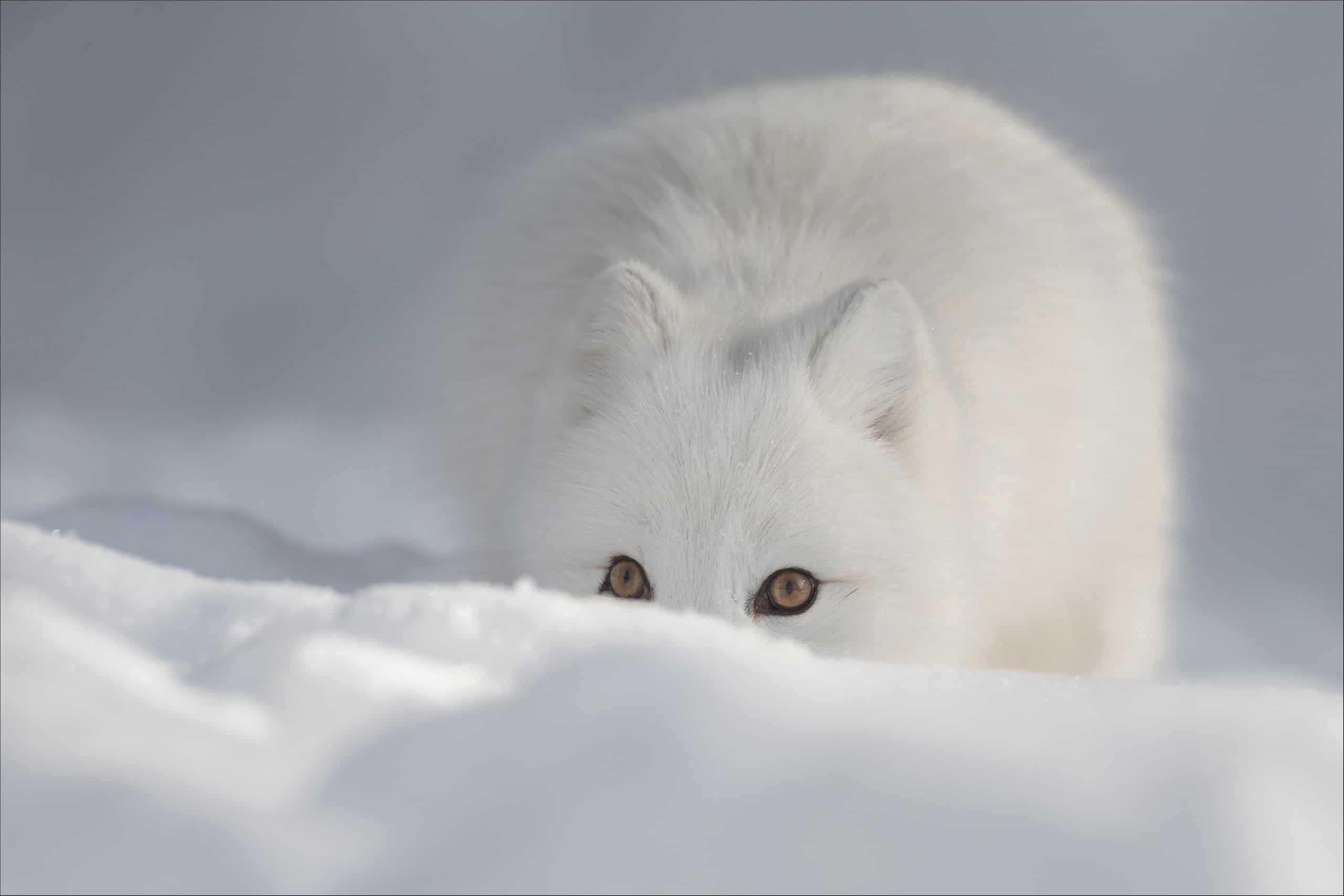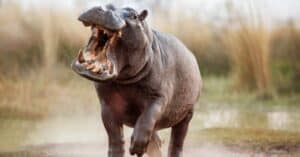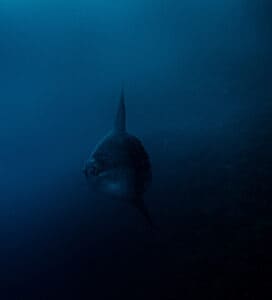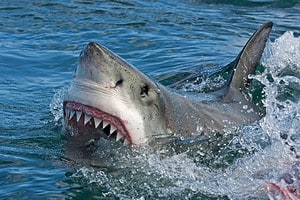For many of us, the winter season brings the opportunity to snuggle up under a blanket with a cup of hot cocoa while watching the snow fall out the window from the warmth of the indoors. For animals in the wild, however, winter is often a difficult time for survival.
Some animals migrate to warmer climates, while others hibernate and avoid the struggle to find food until the weather warms. Others have little tricks to camouflage themselves for better success in hunting and hiding from predators. In this article, you’ll discover fifteen animals with coat colors that change in the winter to help them survive and thrive in the harsh weather.
1. Rock Ptarmigan
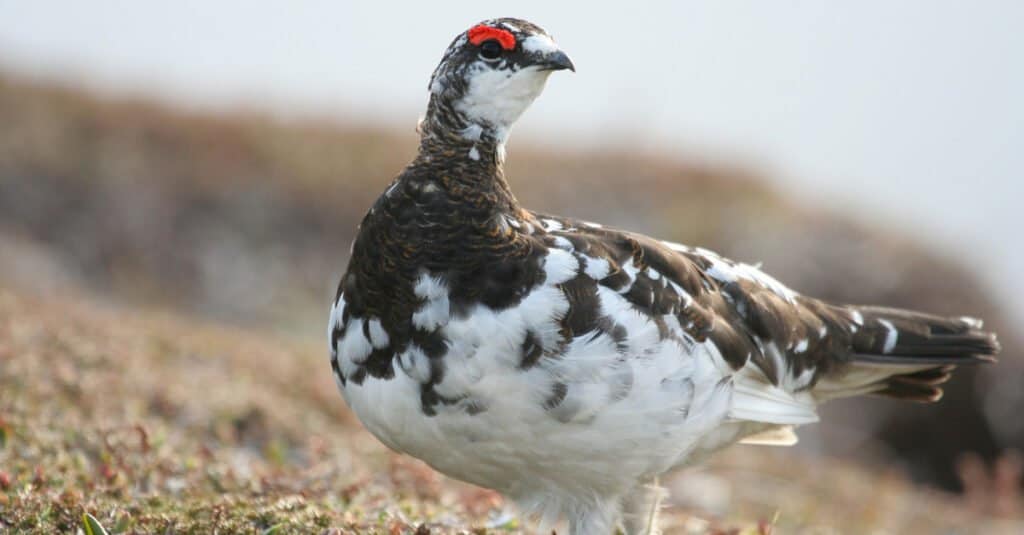
These arctic birds molt twice a year, growing downy white feathers in the winter and mottled brown feathers for summer.
©Tatiana Ivkovich/Shutterstock.com
Rock ptarmigans are a type of grouse that live in the higher mountains of the Arctic. In the winter, they move further south to lower elevations where conditions are not as harsh. The plumage of both the male and female ptarmigan turns white in the winter, providing them camouflage from predators. The white-tailed and willow ptarmigans are two other species of ptarmigans that change coat colors in winter.
The females molt, gaining their brown summer feathers early in the breeding season to keep them hidden and safe while laying eggs. The males, however, stay white right into the early breeding season. The white plumage, in addition to providing camouflage, keeps the birds warmer with its downy warmth. They even grow feathers down to the tips of their toes in winter, so they can use them as snowshoes in walking over soft snowy drifts.
2. Snowshoe Hares
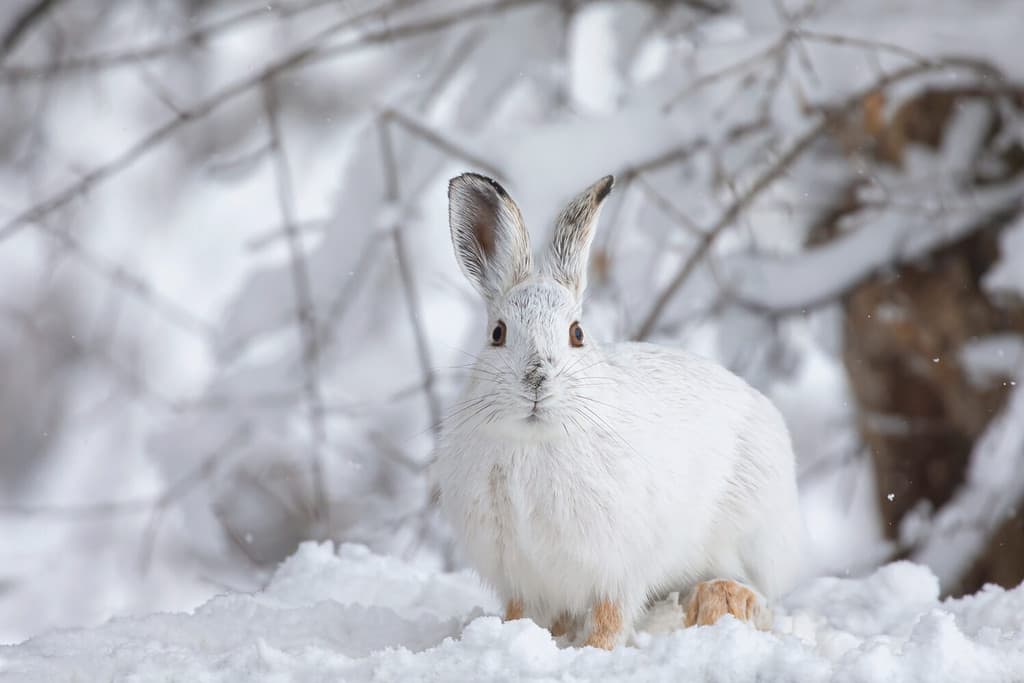
Snowshoe hares already have a nice evolutionary adaptation built into their large hind feet.
©Jim Cumming/Shutterstock.com
North America’s snowshoe hares are also winter wizards. In the summer, hares are a rusty brown color, allowing them to blend in with their surroundings. Once winter comes, however, the hares’ fur turns white to blend in with their snowy environment.
Not only are these amazing hares adapted to the winter in the woodlands and forest bogs by their changing coat color, but they also have large hind feet. These feet mimic snowshoes and allow the animals to hop over the snow without sinking. The soles of their feet have fur that keeps them warm and prevents their feet from freezing.
3. Weasels
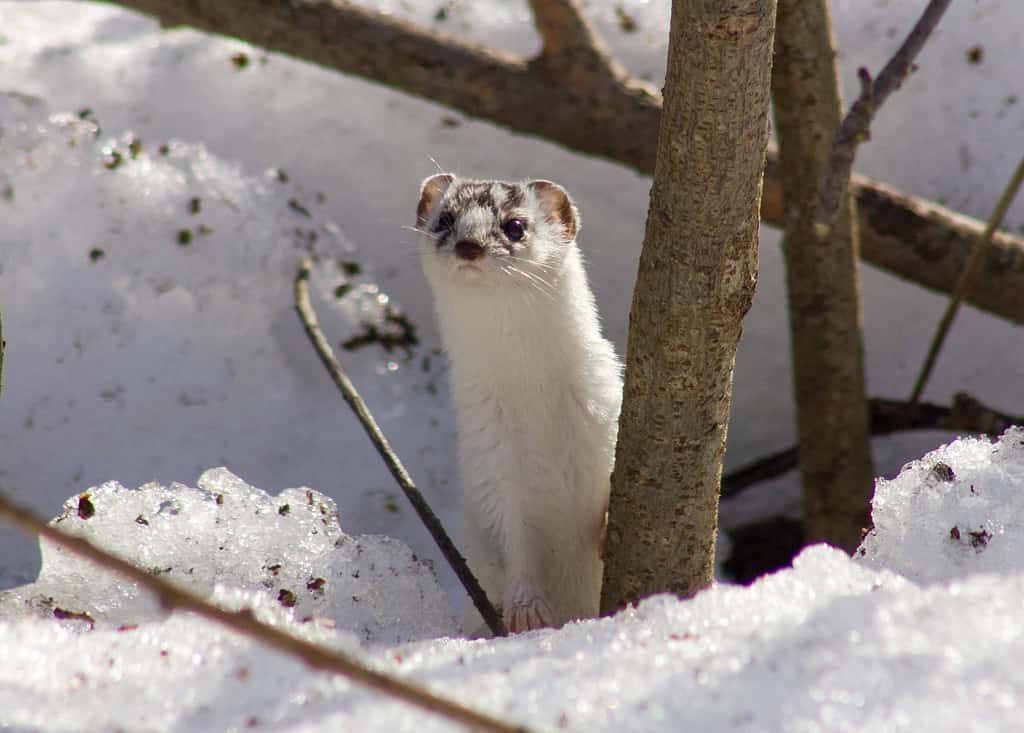
Weasels can live in a large diversity of habitats — from lowland pastures to urban areas to marshes.
©ilyasov/iStock via Getty Images
There are three different species of weasels with coat colors that change in the winter. The least weasel, short-tailed weasel, and long-tailed weasel all have brown fur in the summer but change to white in winter. As the number of daylight hours decreases with the late autumn’s onset, hormones that change the production of melanin-containing pigments in their bodies are triggered.
Their white winter fur takes about three to five weeks to replace the weasels’ brown fur. Not only is this winter coat white for blending in with the snow, but it’s also denser and longer to give the animals warmth. Then, as daylight hours increase in the spring, the weasels’ melanin-containing pigments are triggered once again, and they begin to produce their brown fur for the summer.
4. Peary Caribou
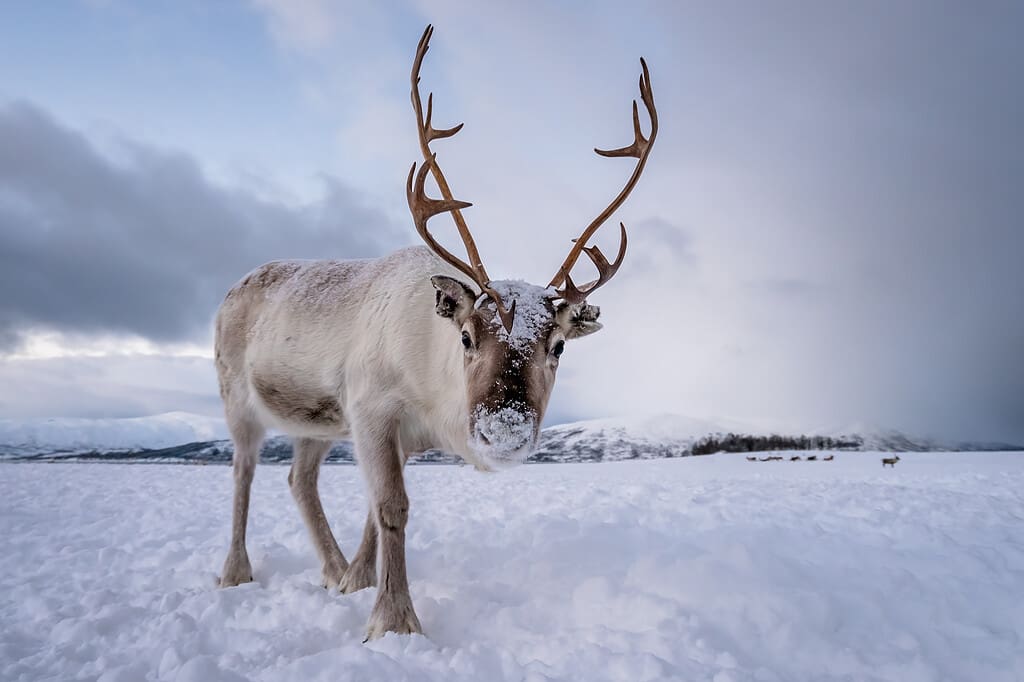
Caribou are called
reindeer
in Europe. In North America, they’re called
caribou
if they’re wild and reindeer if they’re domesticated.
©pawopa3336/iStock via Getty Images
A subspecies of caribou, the Peary caribou live on Nunavut — high islands in the Arctic — and in Canada’s Northwest Territories. These members of the deer family are a Threatened Species. Moreover, they’re the smallest species of North American caribou.
These caribou have adapted to their environments with their compact size, which conserves heat, and specially-adapted hooves that allow them to walk on the icy and snowy surfaces of their habitats. Their diets have also adapted to the short growing, highly dense season of vegetation. Their fur — or pelage —turns white to provide camouflage in the winter.
5. Collared Lemmings
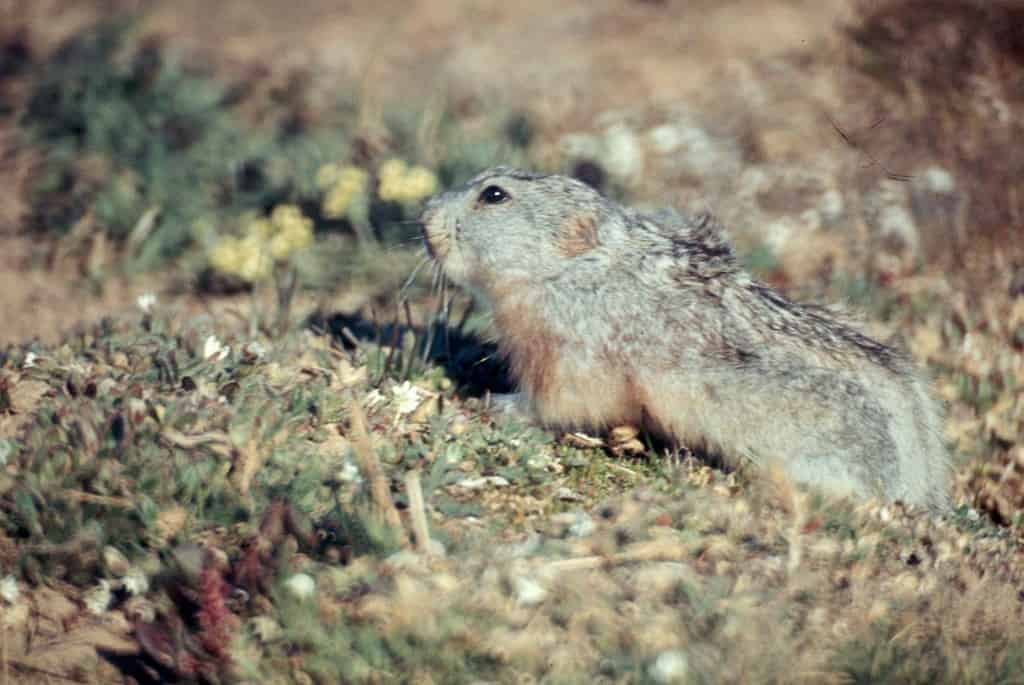
These little lemmings are barely a pound, so blending in with their surroundings is critical for their survival.
©Colorado State University Libraries/ CC BY-SA 4.0 – Original / License
The tiny collared lemmings — a mere 6 inches and barely 4 ounces of creature — live in the arctic tundra. They have summer coats that are light to dark grey with dark lines going down their backs similar to chipmunks. However, they are one of only a very few types of rodent whose coats turn white in the winter.
Collared lemmings adapt to their snowy winter surroundings by growing their white pelage. They also live under the snow in the winter, feeding on willow buds and twigs. In fact, they tunnel down under the snow to the permafrost layer for warmth and food.
6. Siberian Hamsters
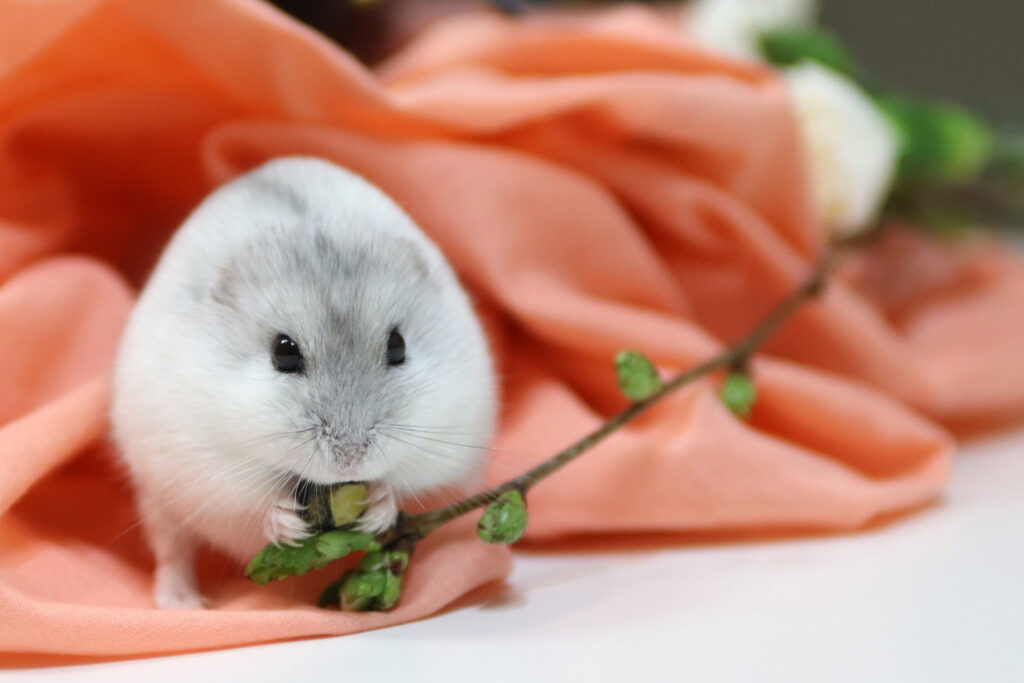
Although these little rodents came from the cold climate of Siberia, if you have one as a pet, it should always be kept indoors.
©Elena van den Akker/ via Getty Images
Also known as Campbell’s hamster, the Siberian hamster is a very tiny 4 inches long. Originally, these rodents lived on the icy steppes of Siberia. Their feet are silver, and their stomachs are white.
During the summer months, Siberian hamsters have brown or gray fur on their upper body and three long dark stripes down their backs. In the winter months, though, their fur turns white. That fur is extremely warm and soft, an adaptation to its original cold habitat.
7. Arctic Foxes
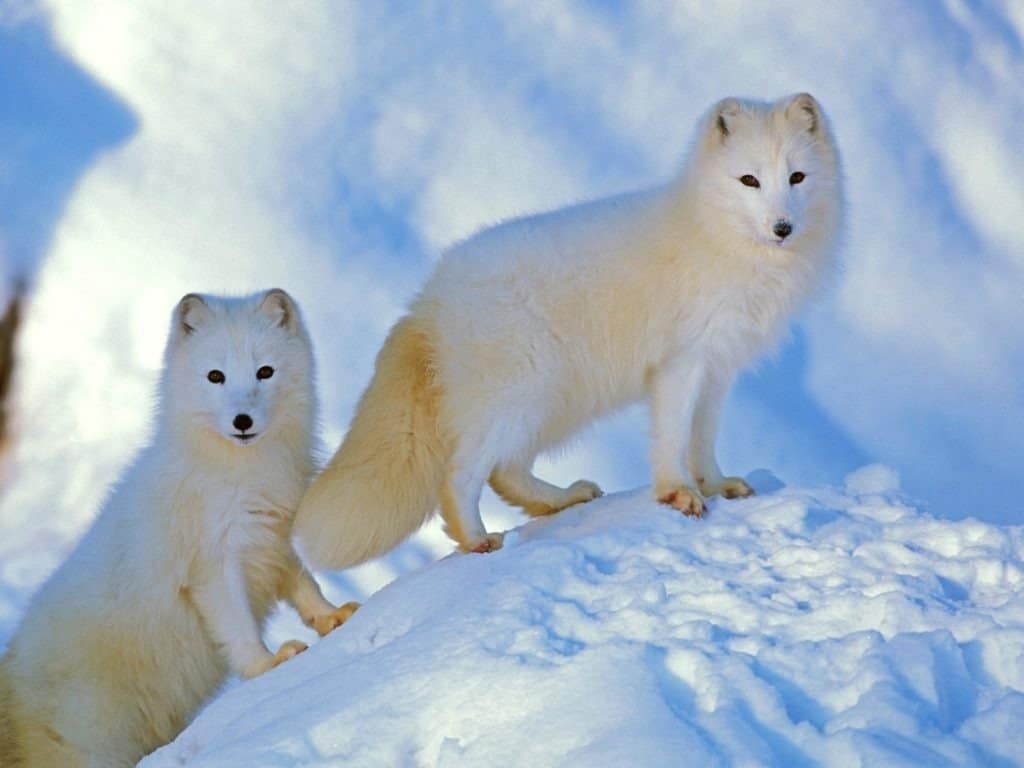
These foxes have short lifespans in the wild — typically three to four years at most.
©rokopix/Shutterstock.com
The harsh conditions of the Arctic provide the living environment for these foxes. Arctic foxes have eight subspecies which include the Mainland Arctic fox and Iceland Arctic fox. They feed on fish, berries, and carrion, but their survival depends mostly on lemmings.
Arctic foxes’ fur changes in terms of thermal protection and color as winter approaches. Their gray, brown, or bluish brown summer coats becom thick and white in the winter. Foxes will often hole up in their dens, curl into balls, and wrap their thick, soft tails around themselves to keep warm.
8. Stoats
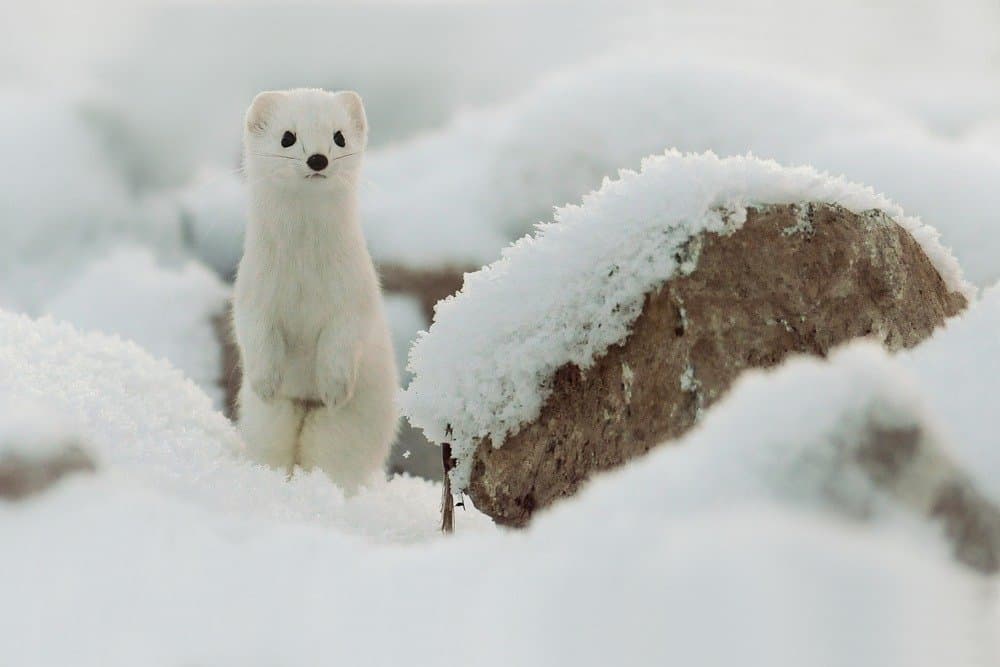
While a
stoat
is actually a weasel, it is much smaller than other weasels.
©Krasula/Shutterstock.com
Stoats are usually solitary animals who only join with other stoats to mate. They are feisty little creatures who can kill, drag, and eat animals five times bigger than they are. Rabbits are their preferred prey, and these small weasels will eat about a third of their own body weight in rabbit meat or other prey each day.
Found in North America and Eurasia, these creatures live in woodlands and moorlands. In the summer, they have white stomachs and brown fur on the tops of their bodies. In the winter, though, they shed the brown fur and grow warm white fur, called ermine, which keeps them camouflaged and warm throughout the winter.
9. Reindeer
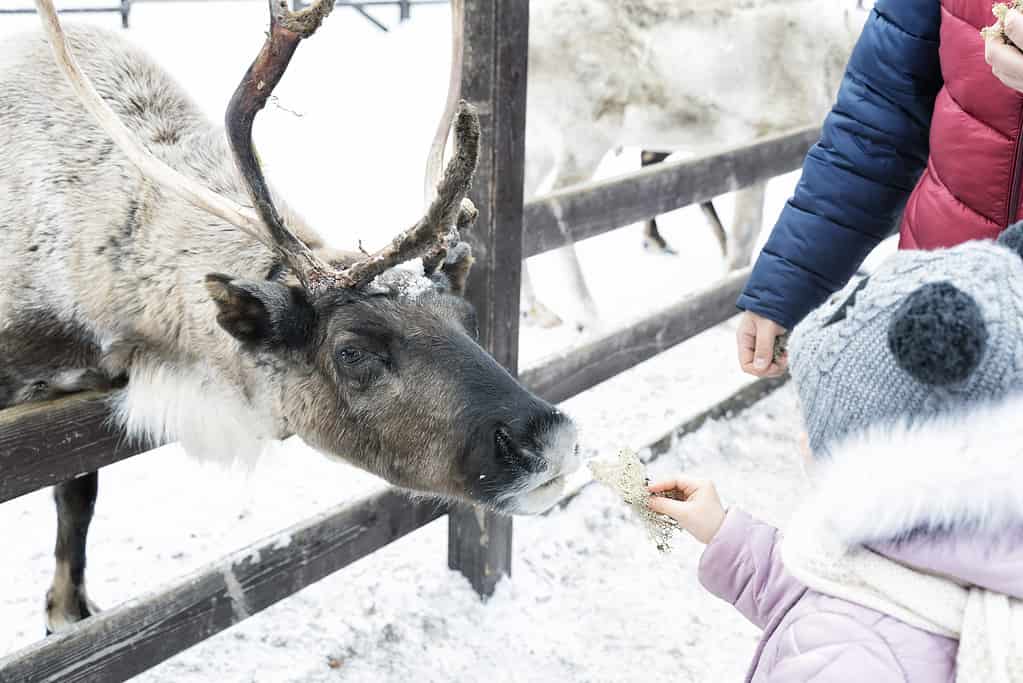
Unfortunately, reindeer are classified as a vulnerable species on the Red List of Threatened Species.
©Elena Gurova/iStock via Getty Images
There are 14 subspecies of reindeer, with half of those subspecies being caribou. Sometimes, people use the terms reindeer and caribou interchangeably. You can find reindeer in places like Greenland, Russia, and the Lapland region.
Reindeer’s coats are darker brown and turn lighter — to almost white — in the winter. Depending on where the reindeer live, their coats can be different shades as well. Those living in the woodland areas usually have a dark brown coat compared to the white fur of reindeer living in Greenland.
10. Arctic Wolves
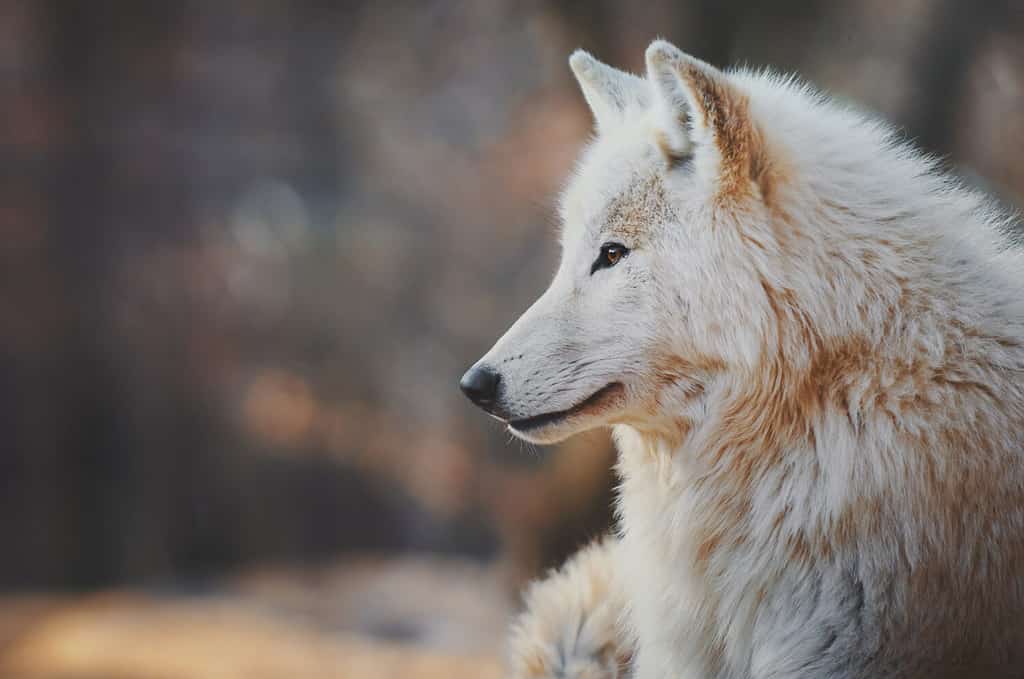
Since food can be scarce, Arctic wolves can eat up to 20 pounds of food in one setting.
©JDzacovsky/Shutterstock.com
Arctic wolves live in North America and Greeland above the northern treeline in the tundra. Life in these northernmost regions are brutal, and only top-ranking alpha and beta females are allowed to bear pups. This is so the pups won’t starve when food resources become scarce.
They have two layers of thick white fur during most of the year, because it’s winter for them almost year-round. They also have small ears to avoid heat loss through them, padded paws for warmth and a better grip on the icy surfaces of the tundra, and fur between their toes to keep their feet warm in the snow.
11. White-tailed Jackrabbit
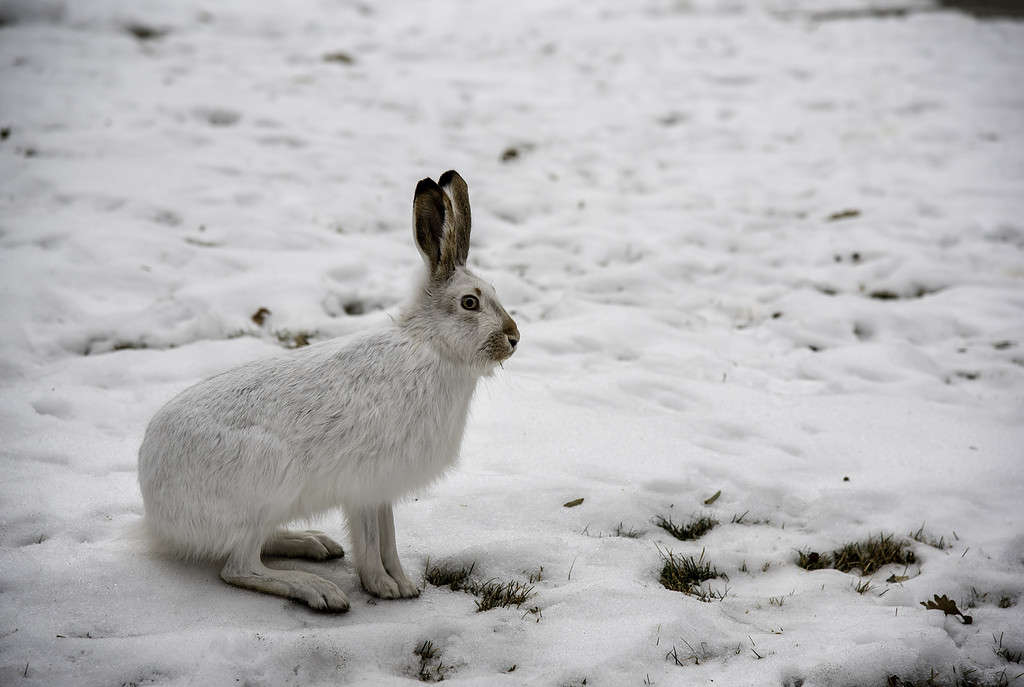
These hares live for about five years in the wild.
©Irina Babina/iStock via Getty Images
Actually, the white-tailed jackrabbit is a hare. These animals can run right after being born, can leap ten feet into the air, and run 40 miles an hour. They are the third-largest species of hare, with only the Arctic and Alaskan hare being larger.
In the summer, white-tailed jackrabbits are dark brown or gray on top and have light gray bellies. When they turn white for the winter, their ears stay darker. This color adaptation allows them to thrive in Canada and the northern parts of America, where they live.
12. Alaskan Hare
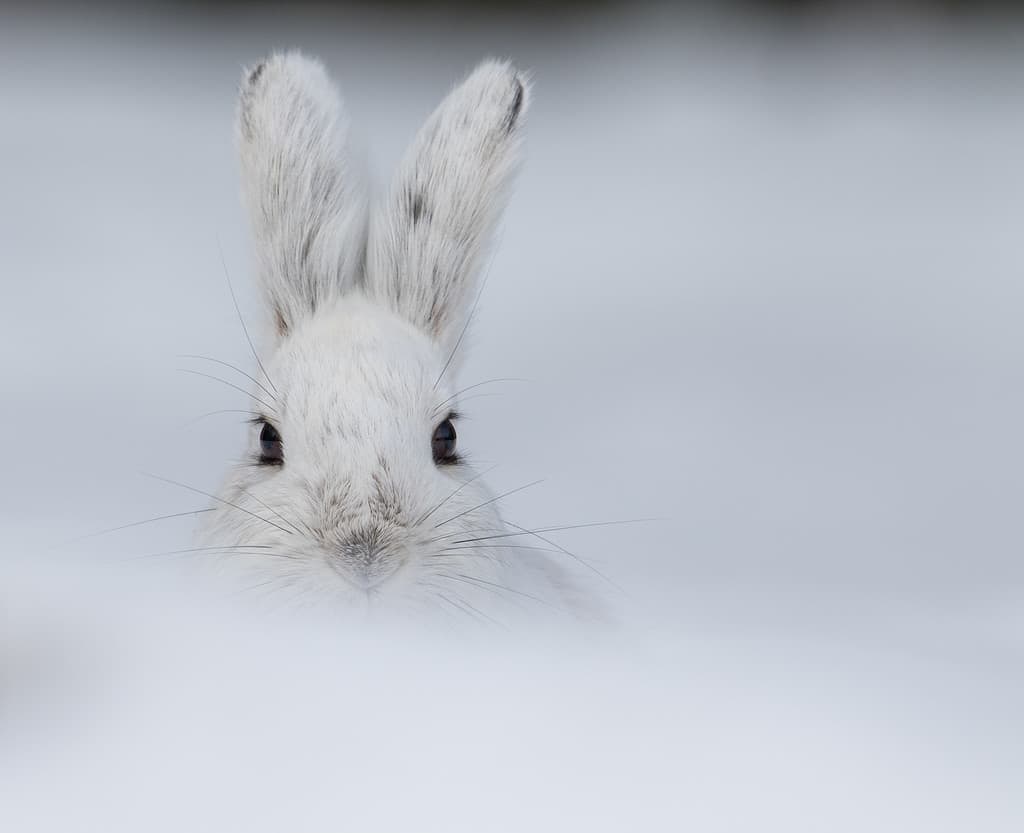
Alaskan hares live in western Alaska and the Alaska Peninsula in the United States.
©Dee Carpenter Photography/iStock via Getty Images
Also known as the tundra hare, the Alaskan hare is the largest species of hare. These animals prefer the icy Arctic tundra where it is open for finding food, but they’ll use available brush that’s nearby when they’re not foraging for roots, tubers, wood, bark, or stems.
For most of the year, these animals live a solitary life. When there’s snow cover, though, they will aggregate. They have brownish or gray fur with white bellies. Their winter fur is thick and white, providing camouflage and warmth from the cold tundra environment.
13. Arctic Hares
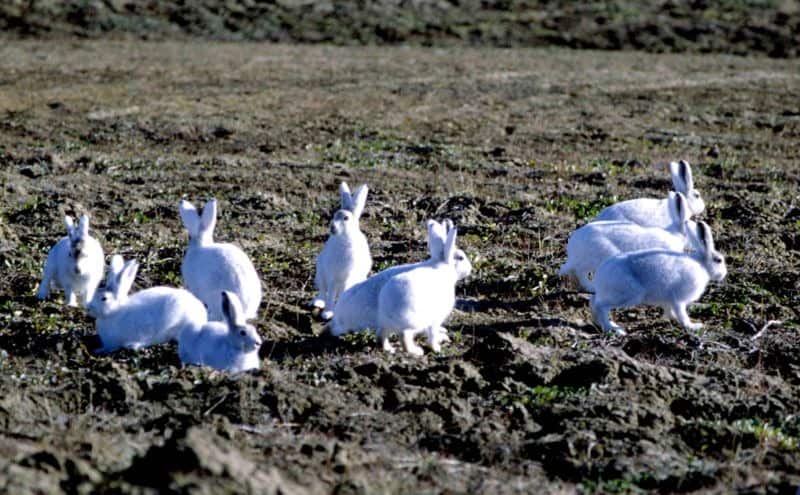
Although they live in rocky mountainous and tundra environments, they need areas with enough cover to allow plants to grow and prevent the snow from getting too deep.
©Ansgar Walk, CC BY-SA 3.0, via Wikimedia Commons – Original / License
Arctic hares live in the harsh climates of the Northern regions of Canada and on some of Greenland’s islands. To survive there, they have longer and straighter teeth than most other hares to help them extract plants out of the rocky crevices of the tundra. Though they typically live solitary lives, they do congregate in groups when they’re feeding.
Grayish-brown in the summer, these hares have black-tipped ears. In the winter, even though their fur turns all white, the tips of their ears remain black. Their sharp claws help them dig into ice and snow as they navigate the icy tundra terrain.
14. Mountain Hares
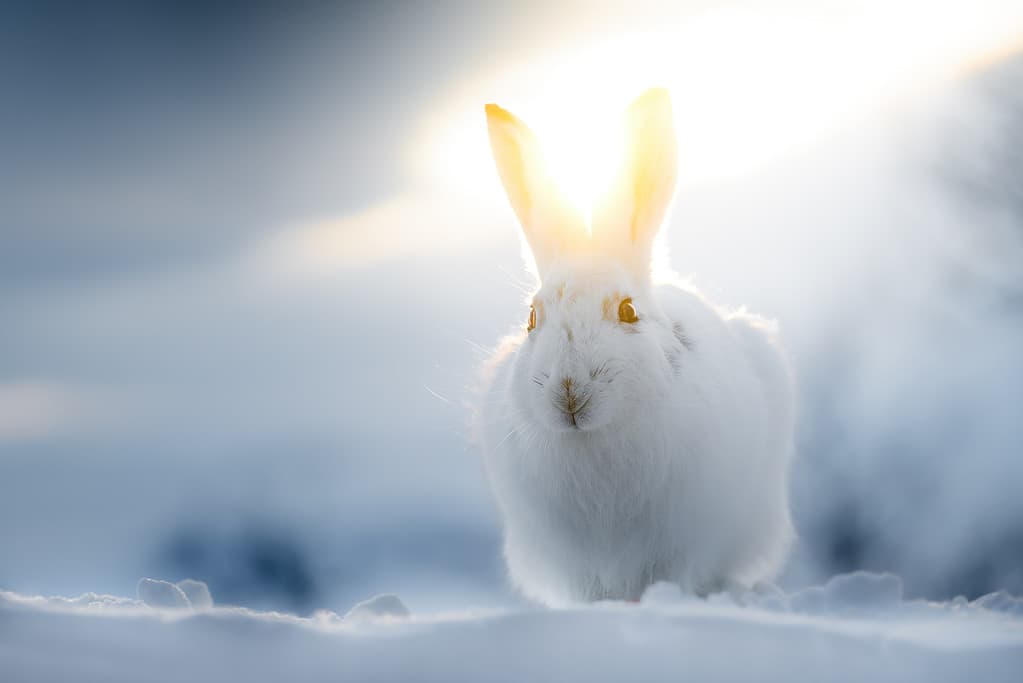
These hares weigh about 5.5 to 6.5 pounds and measure 1.5 to almost 2 feet. They live for three to four years.
©Petter Nass/iStock via Getty Images
Scotland and northern England are home to mountain hares. They tend to live in upland areas such as heathland. They eat vegetation and bark while bedding down in shallow depressions in the ground called forms. When they’re threatened, they can run up to 45 miles an hour and will use their hind legs to propel them forward.
In the summer, they have gray-brown coats. They often have a bluish tint to their coats. In the winter, their fur turns a thick white to keep them camouflaged and warm. Only their ears maintain their black tips.
15. Snow Leopards
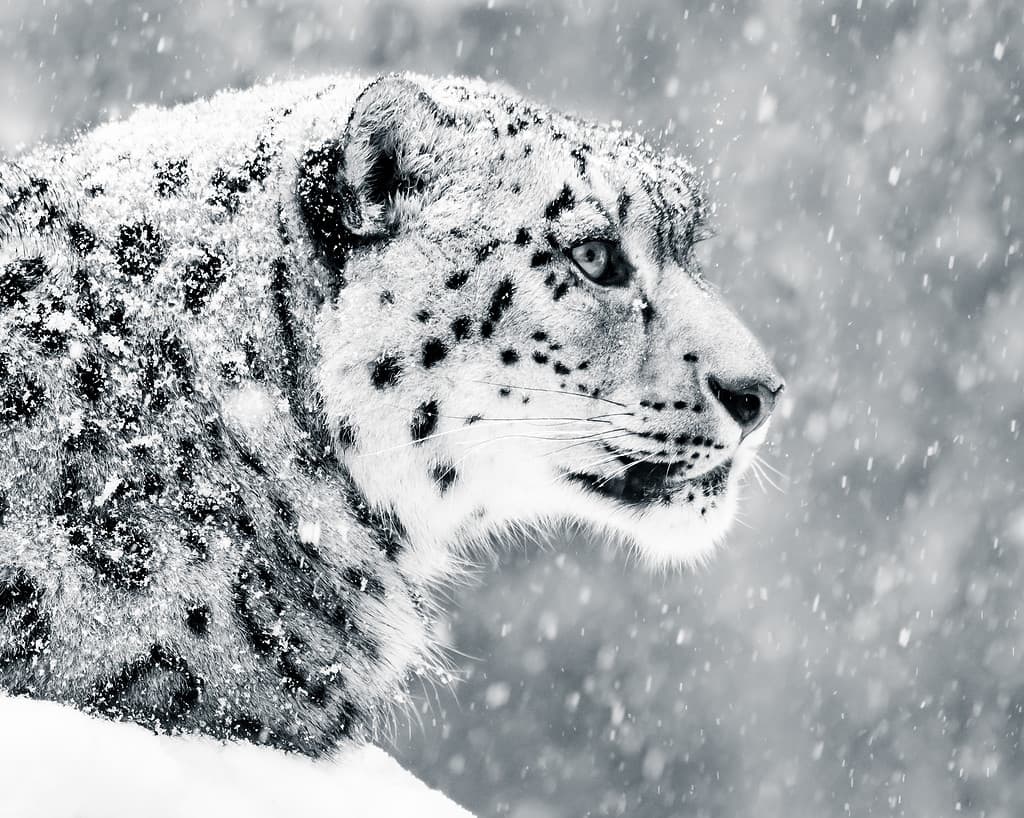
Weighing in anywhere from 60 to 120 pounds and measuring 2 to 5 feet, these majestic animals are powerful mountain dwellers.
©abzerit/iStock via Getty Images
Snow leopards live in Asia across twelve different regions. They live and travel solo and are evasive creatures. In fact, they are so secretive and blend in with their environments so well, that many people have called them the ghost cats of the Himalayas.
These big cats truly are masters of disguise. In the summer, their yellowish gray fur blends perfectly with their mountainous surroundings and blooming plant life. In winter, their coats change to the off-white color of the snow around them.
Summary of Animals With Coat Colors That Change in Winter
| Number | Animal | Habitat |
|---|---|---|
| 1. | Rock ptarmigan | Arctic mountains |
| 2, | Snowshoe hares | Woodlands and forest bogs of North America |
| 3. | Weasles | Diverse habitats — moors, marshes, urban areas, and woodlands |
| 4. | Peary caribou | Europe and North America |
| 5. | Collared lemmings | Arctic tundra |
| 6. | Siberian hamsters | Originally from the icy steppes Siberia, but now a large population are domesticated as pets. |
| 7. | Arctic foxes | Arctic environment |
| 8. | Stoats | North American and European woodlands and moorlands |
| 9. | Reindeer | Greenland, Russia, and Lapland regions |
| 10. | Arctic Wolves | North American and Greenland tundra habitats |
| 11. | White-tailed jackrabbit | Canada and northern parts of America |
| 12. | Alaskan hares | Tundra habitats of Alaska |
| 13. | Arctic hares | Mountainous and tundra regions of the Arctic |
| 14. | Mountain hares | Scotland and northern England |
| 15. | Snow leopards | Range is across 12 different regions in Asia |
Thank you for reading! Have some feedback for us? Contact the AZ Animals editorial team.

